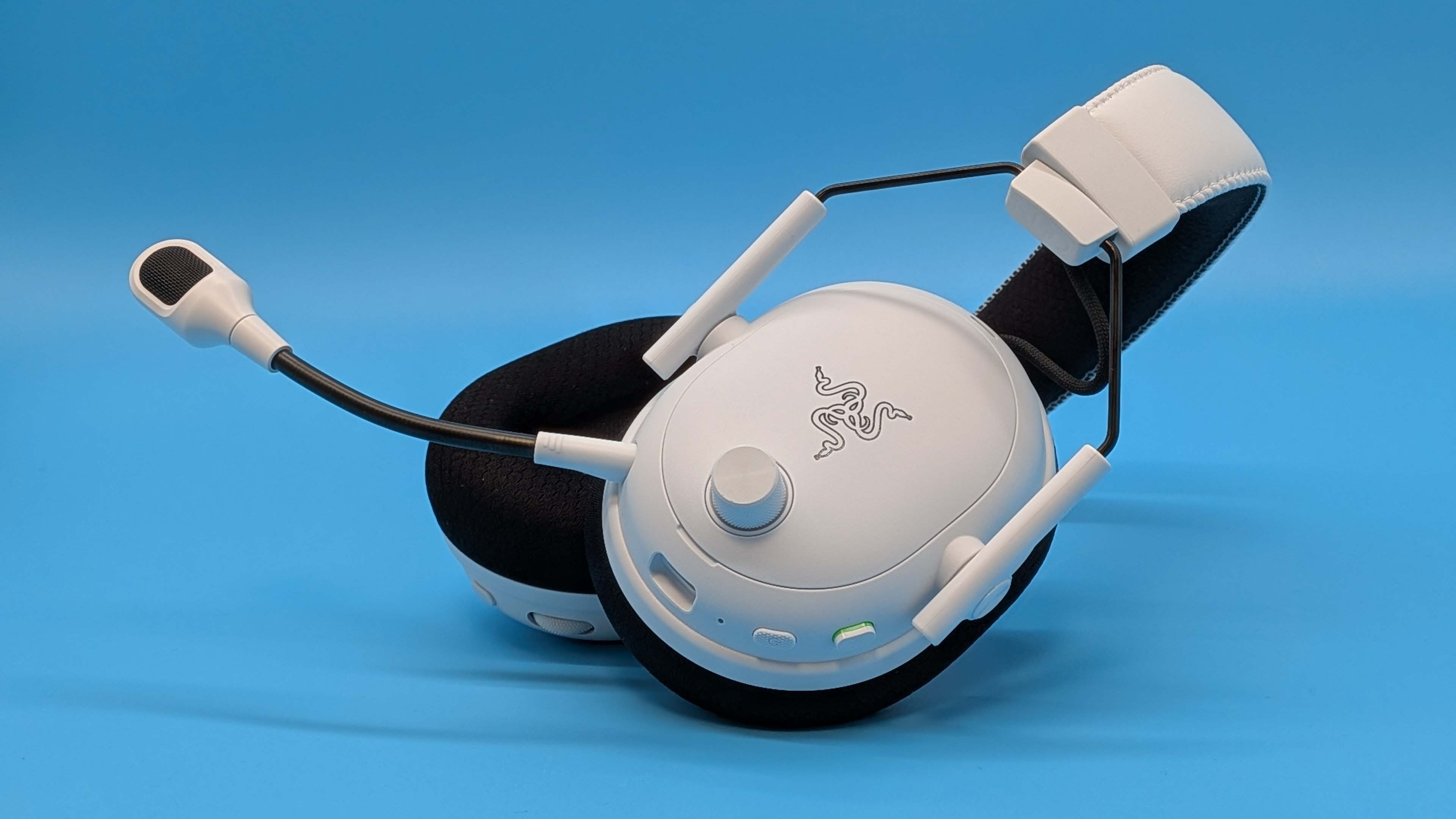Our Verdict
The BlackShark V3 Pro is a great-sounding gaming headset, it's just the headline feature—its ANC—doesn't sing for me and that makes the price premium over the excellent non-Pro BlackShark V3 unpalatable.
For
- Lovely build quality
- New drivers sound fantastic
- Mic is good
- Ultra-low latency
Against
- ANC isn't hugely effective
- New features slam the battery life
- A lot more expensive than the non-Pro version
PC Gamer's got your back
It's about time Razer launched a properly new version of its flagship esports-focused BlackShark gaming headset. After all, the BlackShark V2 launched five years ago and was one of my early PC Gamer reviews on my return to the fold back in 2020.
As a card-carrying member of the HyperX Cloud Alpha fan club, I was surprised to find Razer rocking up and knocking the headset off its perch (stand?), but the company had made that its express purpose and nailed it on all fronts. Then came the BlackShark V2 Pro, the wireless version, which itself went toe-to-toe with the HyperX Cloud Alpha Wireless.
The wired and wireless versions—including the don't-call-it-as-sequel V2 Pro 2023 update—of the Razer and HyperX cans have been our picks as the best gaming headsets since they launched, and personally I've been using the wireless BlackShark V2 Pro as my go-to office headset all along. In fact, it's only the Audeze Maxwell headset that usurped it at home, because I'm an absolute sucker for a planar magnetic driver.
And now, in 2025, we have a new version, the Razer BlackShark V3 Pro. And it is an upgrade to the original almost across the board, though that includes a $50 upgrade to the original's MSRP, too. Just $10 a year since the original. A bargain, eh?
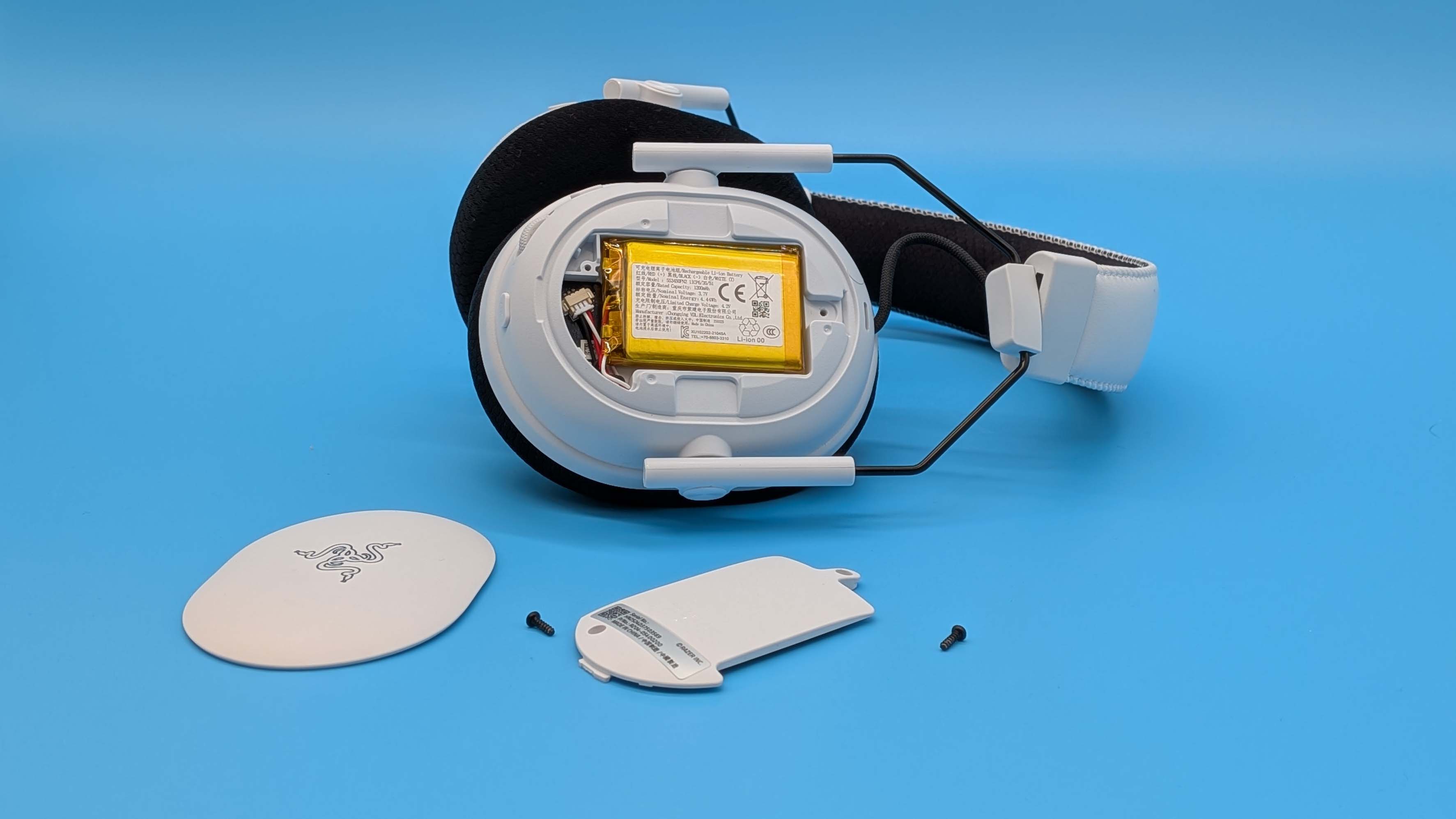
Operating principle: Closed-back
Connectivity: Wireless (Bluetooth 5.3 or HyperSpeed Gen-2), Wired (USB Type-A, 3.5 mm)
Drivers: 50 mm TriForce Bio-Cellulose
Frequency response: 12 - 28,000 Hz
Mic: 12 mm detachable
Pickup: Unidirectional
Battery life: 70 hours
Weight: 367 g | 0.81 lbs
Price: $250 | £252
I will say that, on first pulling it out of the box, I was expecting it to be more or less the same situation as the original vs its 2023 update: pretty minor stuff, but overall a decent improvement.
But when it comes to the audio, this set is miles ahead. I'm still going to be keeping my Maxwells close, but the clarity and tonal separation on offer with Razer's Gen-2 TriForce drivers is something to behold. Belisten? Behear? Whatever. They sound great.
This was where Razer had managed to catch up to the Cloud Alpha headset that it was targeting with the BlackShark V2 cans. It was a deliberate thing, and the ported, chambered drivers closely ape the original HyperX design, creating a level of separation that I was not expecting from something billed as an esports headset.
Keep up to date with the most important stories and the best deals, as picked by the PC Gamer team.
And these new drivers are even better, to the point where I'm switching back to the 2023 version of the BlackShark V2 Pro and am now finding them suddenly rather one dimensional, and aurally flat by comparison. With a quality input source there is a clearly defined soundstage to the presentation, making it incredibly easy to pinpoint specific instruments in a song or elements in a gameworld. Razer has also found a little extra bass from somewhere, too, adding a level of gravity to the sound previous generations didn't quite have.
At too high volumes, that level of clarity can actually turn into some spiky treble, especially in the Music EQ setting. And that's not something I've felt in anything other than high-end, more reference-y headphones, and only very rarely in an actual gaming headset. The Game EQ setting lifts the bass and mids a touch, too, and that can level things out when things get loud in-game.
And in sometimes quite spectacular ways.
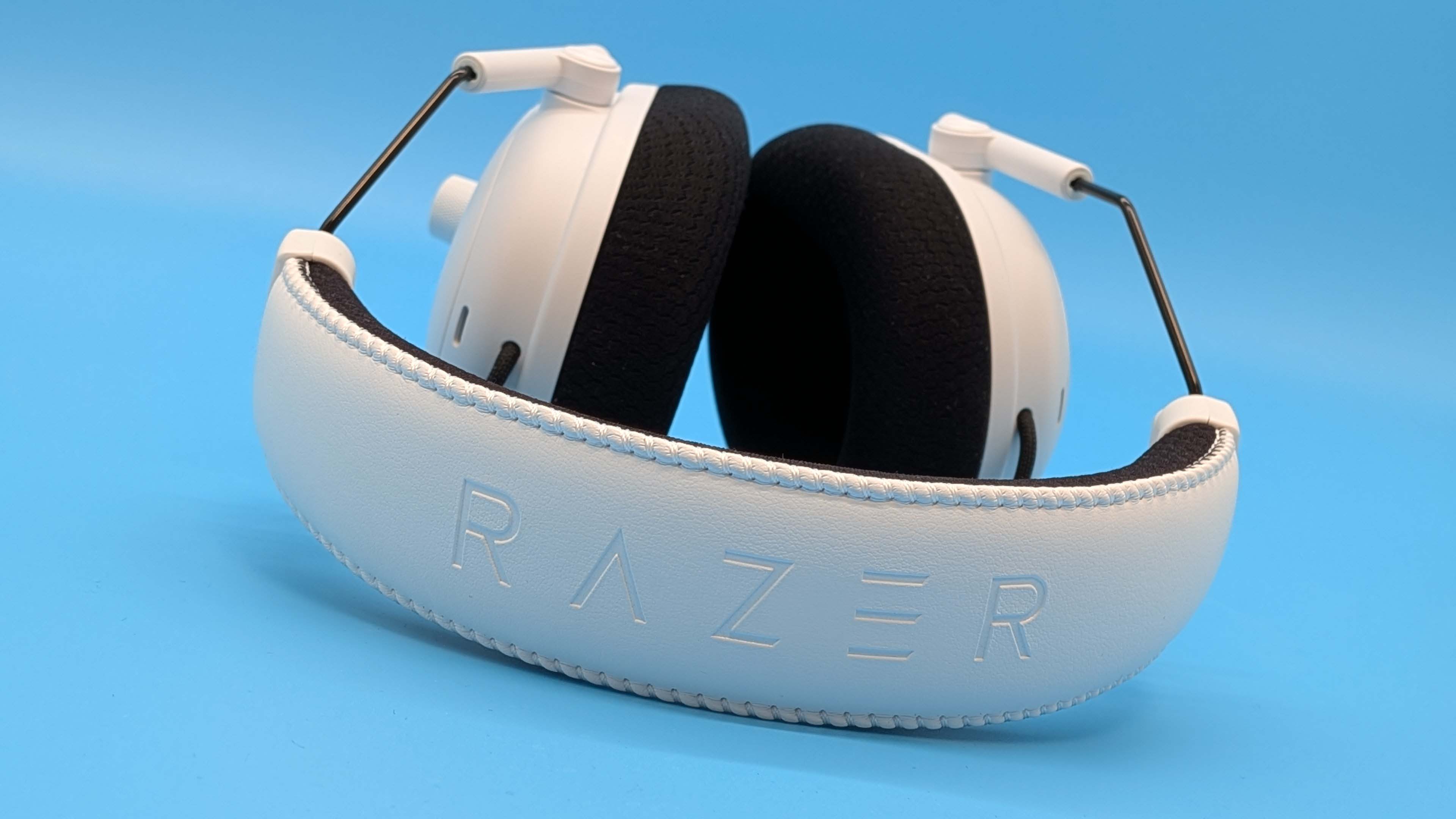
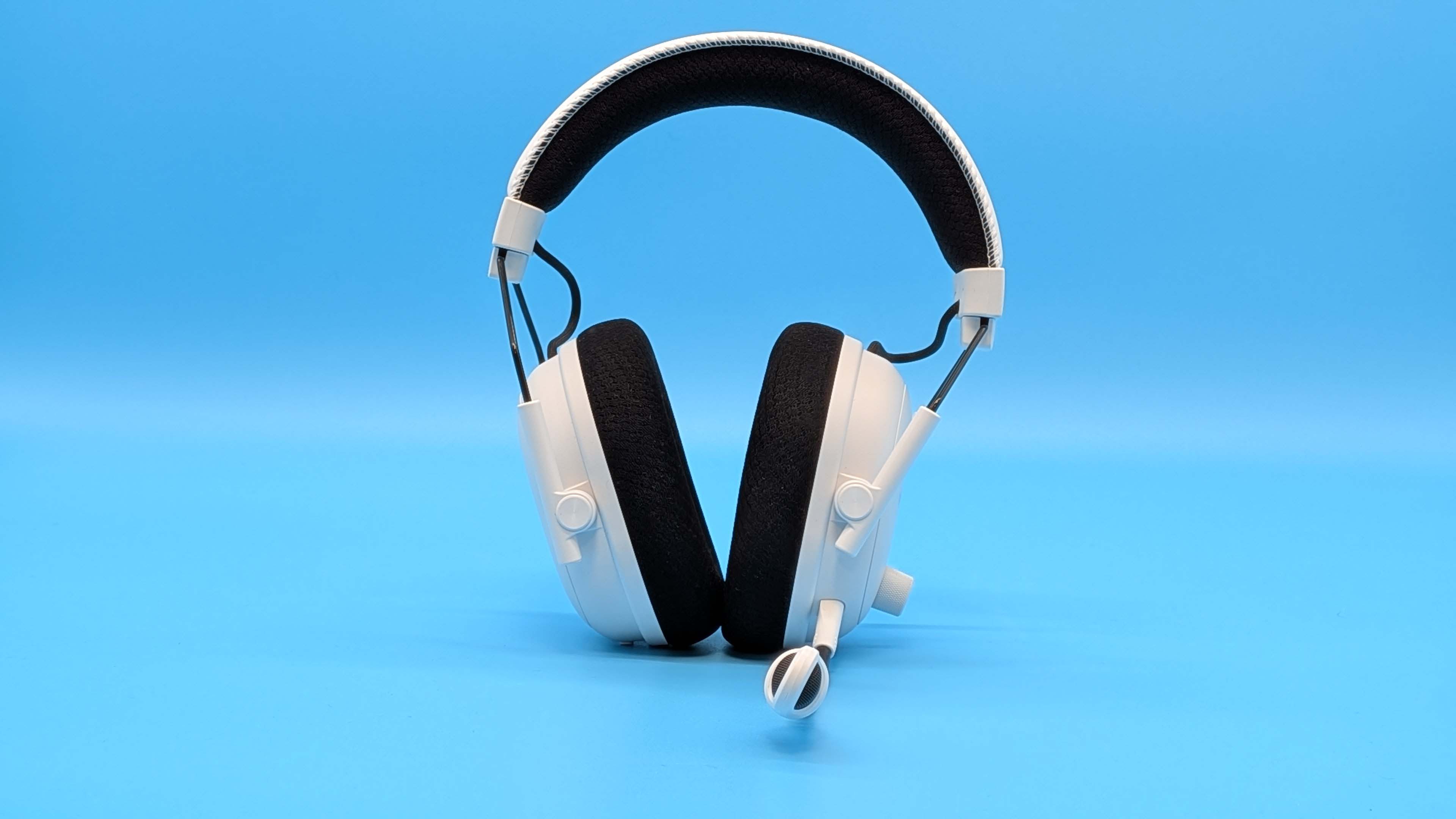
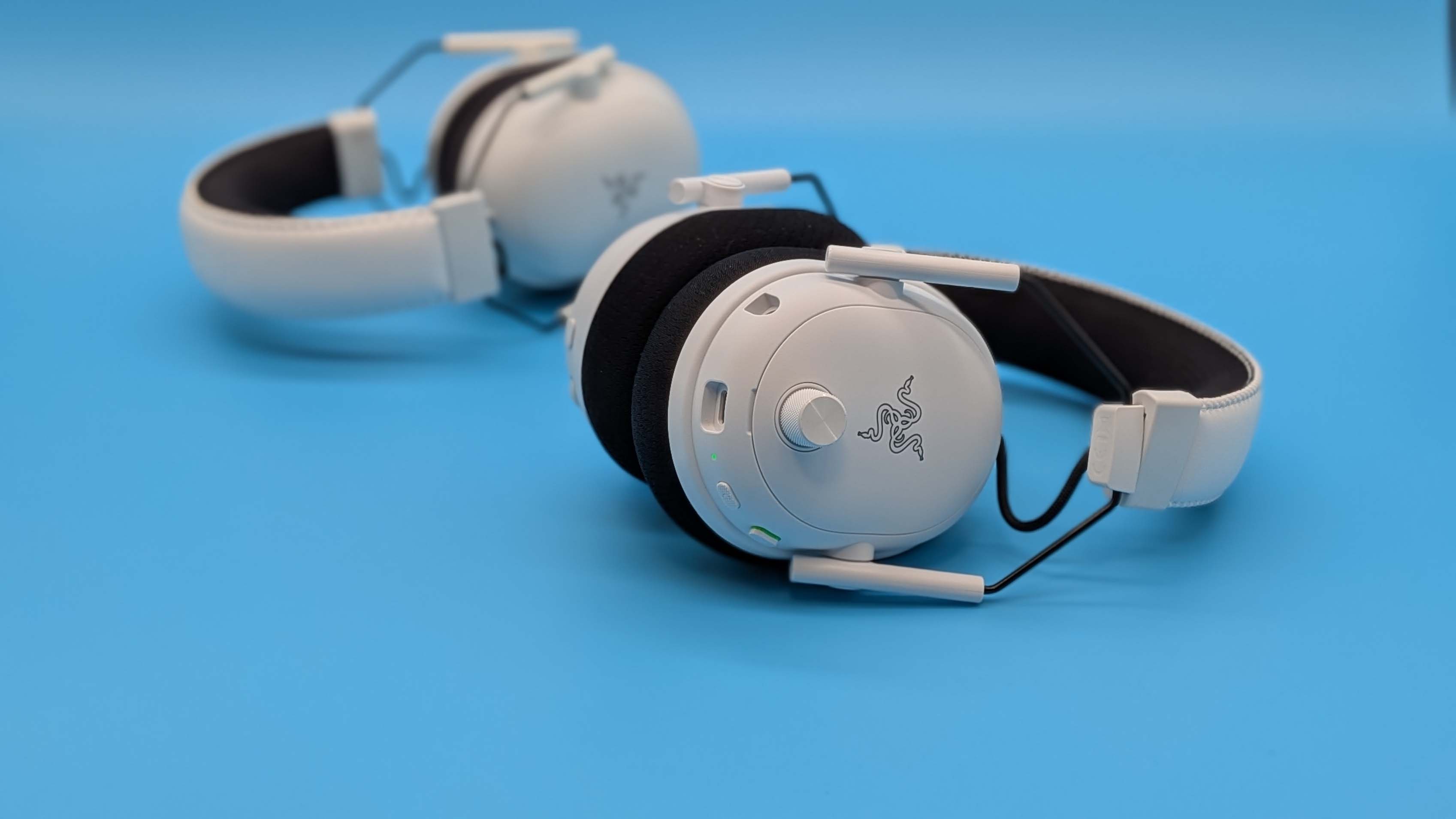
Razer BlackShark V3 Pro and BlackShark V2 Pro in the background
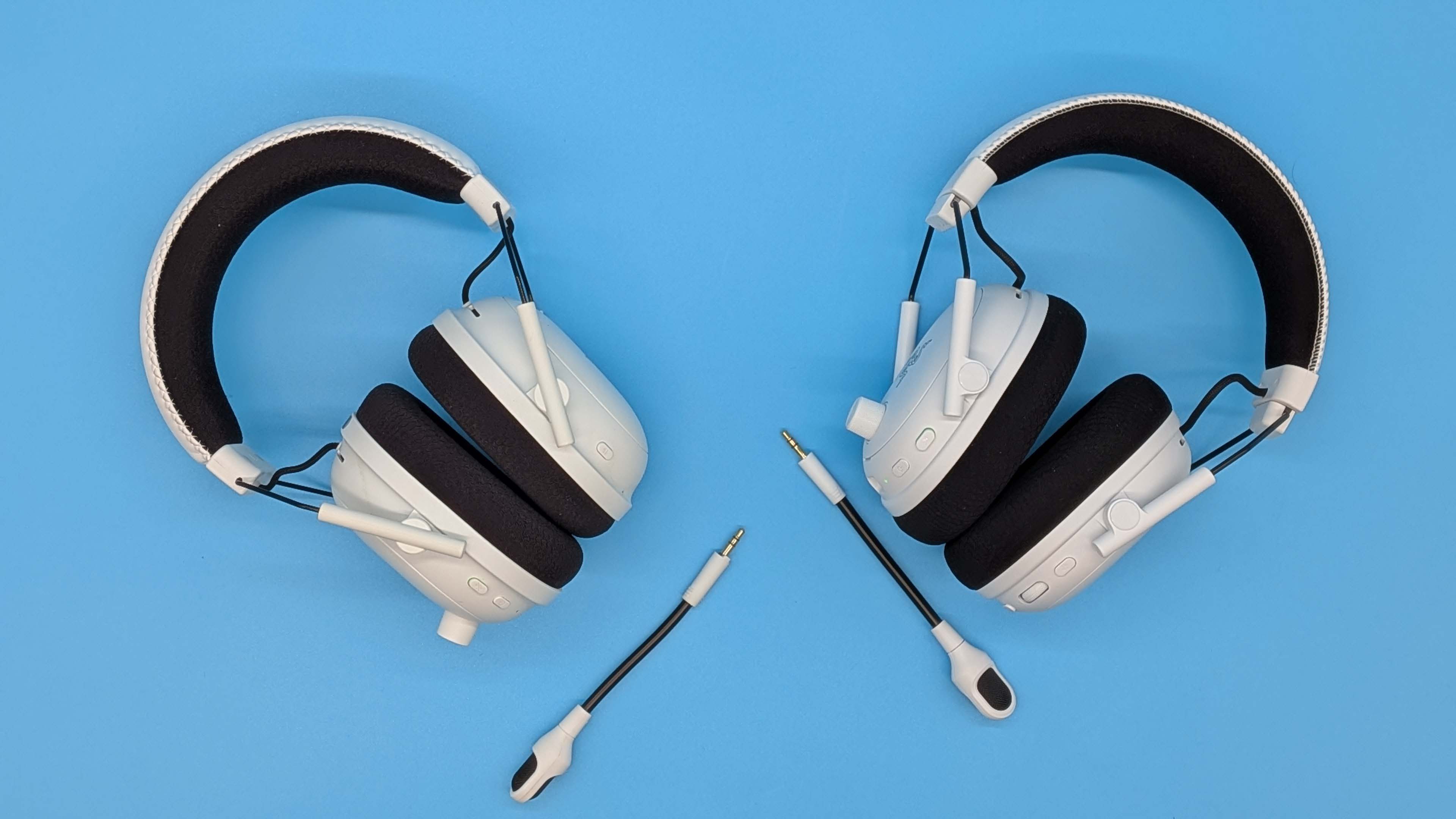
Razer BlackShark V2 Pro on the left and BlackShark V3 Pro on the right
So, what's changed? The Gen-2 drivers have, apparently, been "completely revamped" while essentially retaining the same multi-chamber, ported design. There's a new driver "plug" which sits inside the middle of the bio-cellulose diaphragm and, according to Razer, that cuts distortion in half, which is theoretically what gives them the clarity I've been experiencing.
There's also a much bigger magnet in the base of the driver, too, reportedly 75% bigger. That larger magnet—and the resulting stronger magnetic field—are part of what gives the new TriForce drivers their tonal separation.
The new 12 mm pickup on the mic is pretty decent, too, especially when I've been playing with the EQ. The broadcast option does actually sound pretty good, though I have noticed a little interference occasionally when I was recording my own personal ASMR playlist.
Default EQ:
Broadcast EQ:
That is not to say I find the aural experience flawless, however. One of the most notable new additions to the BlackShark V3 Pro's feature set is that of active noise cancelling (ANC). Or rather what Razer's calling hybrid active noise cancelling as it's using four discrete microphones on the inside and outside of the headset. And, for me, it's bringing some downside and not a whole ton of upsides.
I get that ANC could be a handy tournament feature if done right, but I've got to say, even in our relatively sedate office (bar occasional heated exchanges over exactly when AI will take our jobs), it's not like things are that blocked out. I can still hear the tippety clack of mechanical gaming keyboards; I'm still aware of the dulcet tones of Jacob and Jacob indulging in yet another philosophical debate over the meaning of existence and self; I can still hear the office manager raging about the fire hazard of PC boxes I've littered around me; I've got the entire outside world still at the edge of my hearing.
Sure, it's definitely muted, but given the soft, padded memory foam ear cups are always going to leak some sound themselves—unlike the AceZone A-Spire, with its plush, head-hugging cups—the weak passive isolation doesn't help the BlackShark V3 Pro's efforts in keeping external noise at bay.
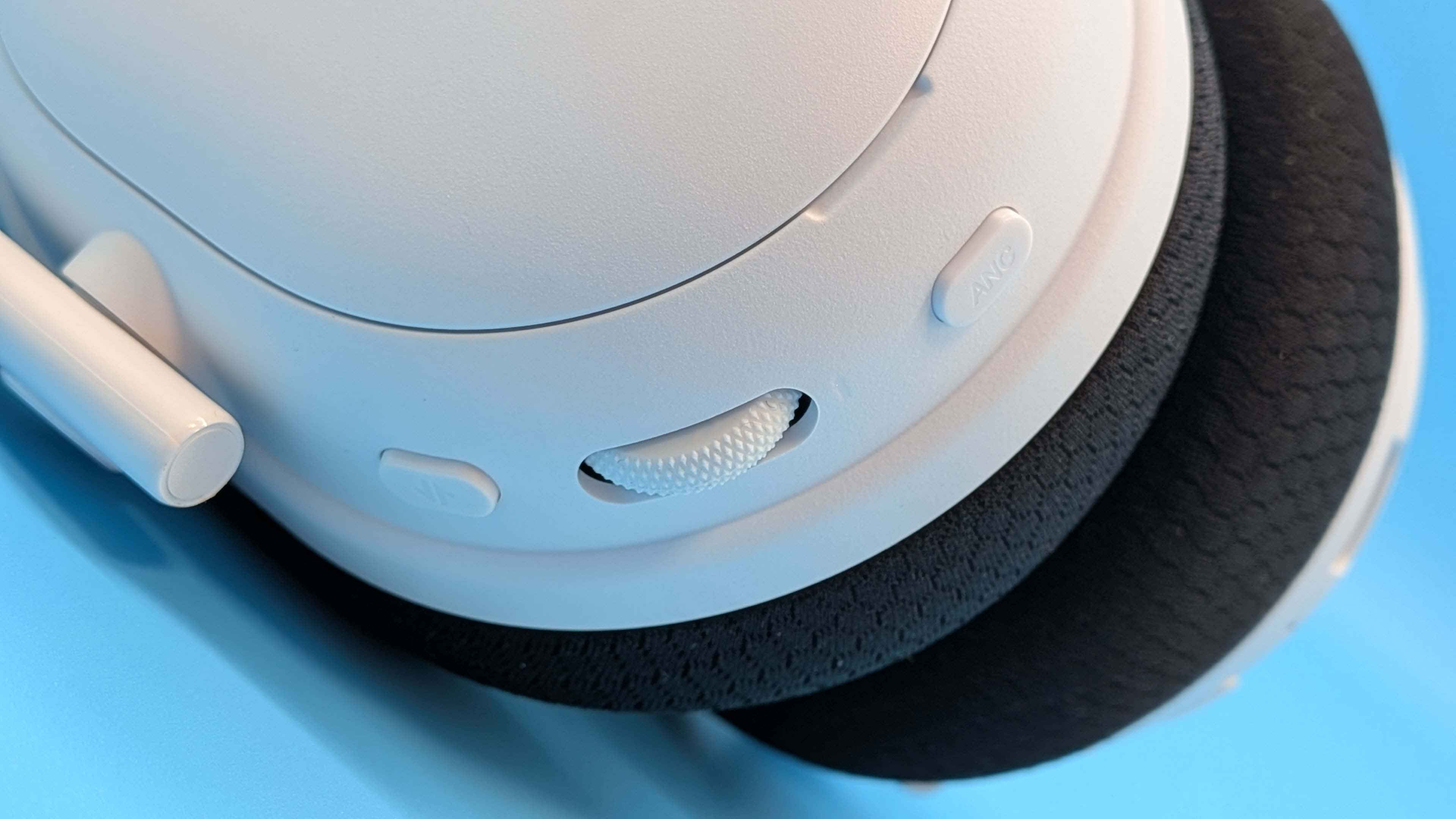

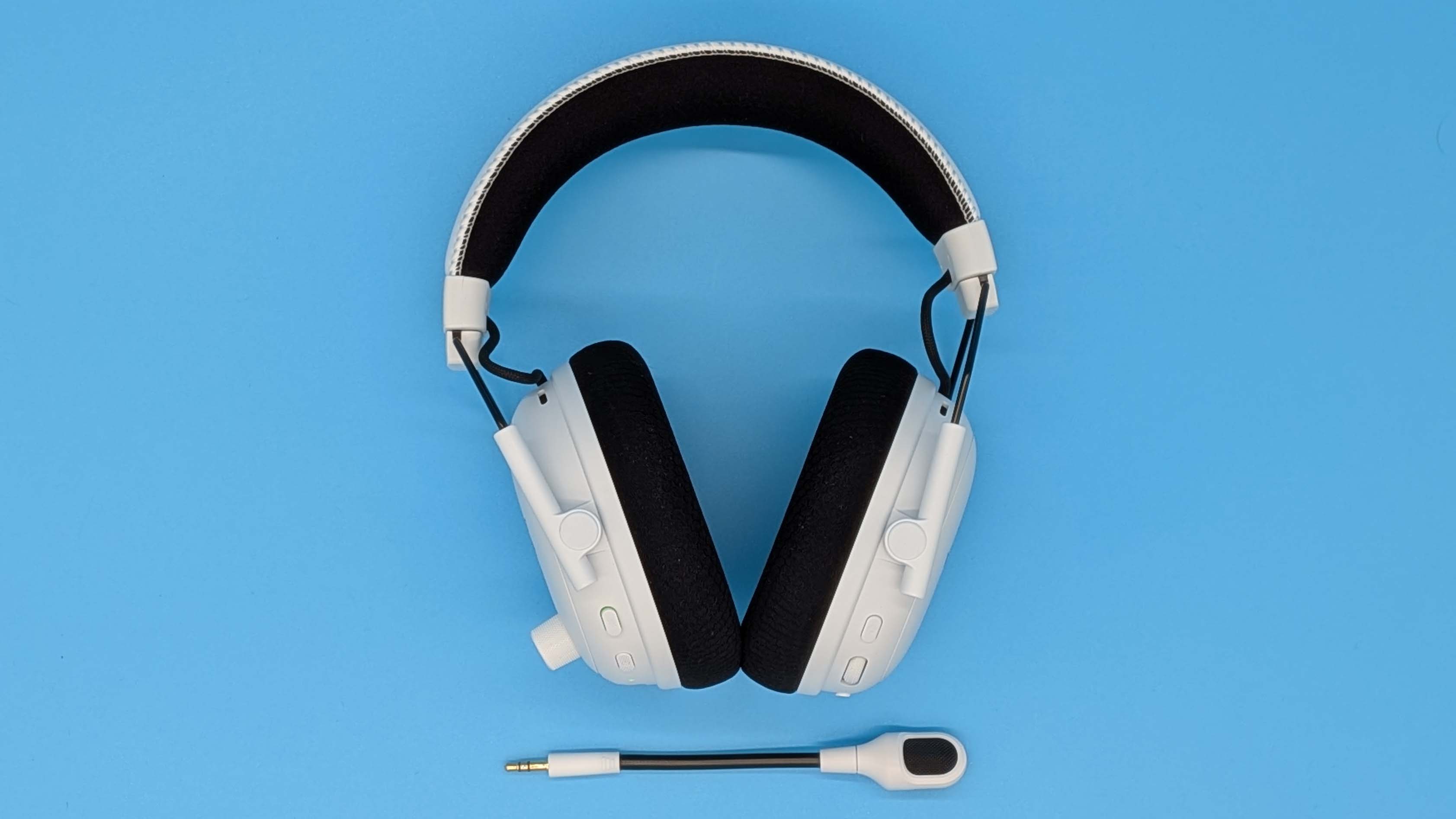
But the ANC does hinder the feel of the audio for me. One of the things I loved about the HyperX Cloud Alpha and the BlackShark V2 drivers was the fact they didn't feel like standard closed-back headsets. There is a wider, more open soundstage regularly only found in leaky open-back headsets, and that is lost with the active isolation of the noise cancelation being enacted on the V3 Pro.
I found it brings the sound closer in to my ears, even while retaining that impressive tonal separation and detailed soundstage, and that makes the long-term experience feel quite oppressive. In the heat of a pro-gaming tournoi, that might well be preferable or even desirable, but if you want to indulge in a lengthy play session at home I've found it less appealing and more fatiguing.
When I first started using the BlackShark V3 Pro I thought that was going to be a real issue, but the longer I've used them the more impressed I've been with the audio quality and clarity they deliver. When I'm gaming, or even just kicking back listening to music, for a shorter session I've found myself less bothered by it than I initially thought. But I've certainly needed to take a break from them every now and then.
And it does have me questioning whether I really want to pay $250 for a gaming headset where the main standout feature is something I don't think is particularly great or that I actually want. Which brings me onto the pigmy elephant in the room: the BlackShark V3. Sans Pro suffix, this middle-child of the new BlackShark lineup is around $100 cheaper, uses nearly the same drivers (using a titanium coated diaphragm instead of bio-cellulose), ditches the new 12 mm mic in favour of the old 9.9 mm detachable one, yet still rocks the same HyperSpeed Wireless connectivity with the optional 10 ms latency feature.
With the same pro-tuned features baked into the Synapse software you're getting all the custom EQ fun, all the same enhancements should you want them, and crucially the same audio experience.
It doesn't come in white, which is a bit of a bummer as I dig the aesthetic, but otherwise kinda has everything that I've loved about using the Pro version. It's lighter, too, by almost 100 g. No hybrid ANC, no 3.5 mm connection, but honestly, no worries.
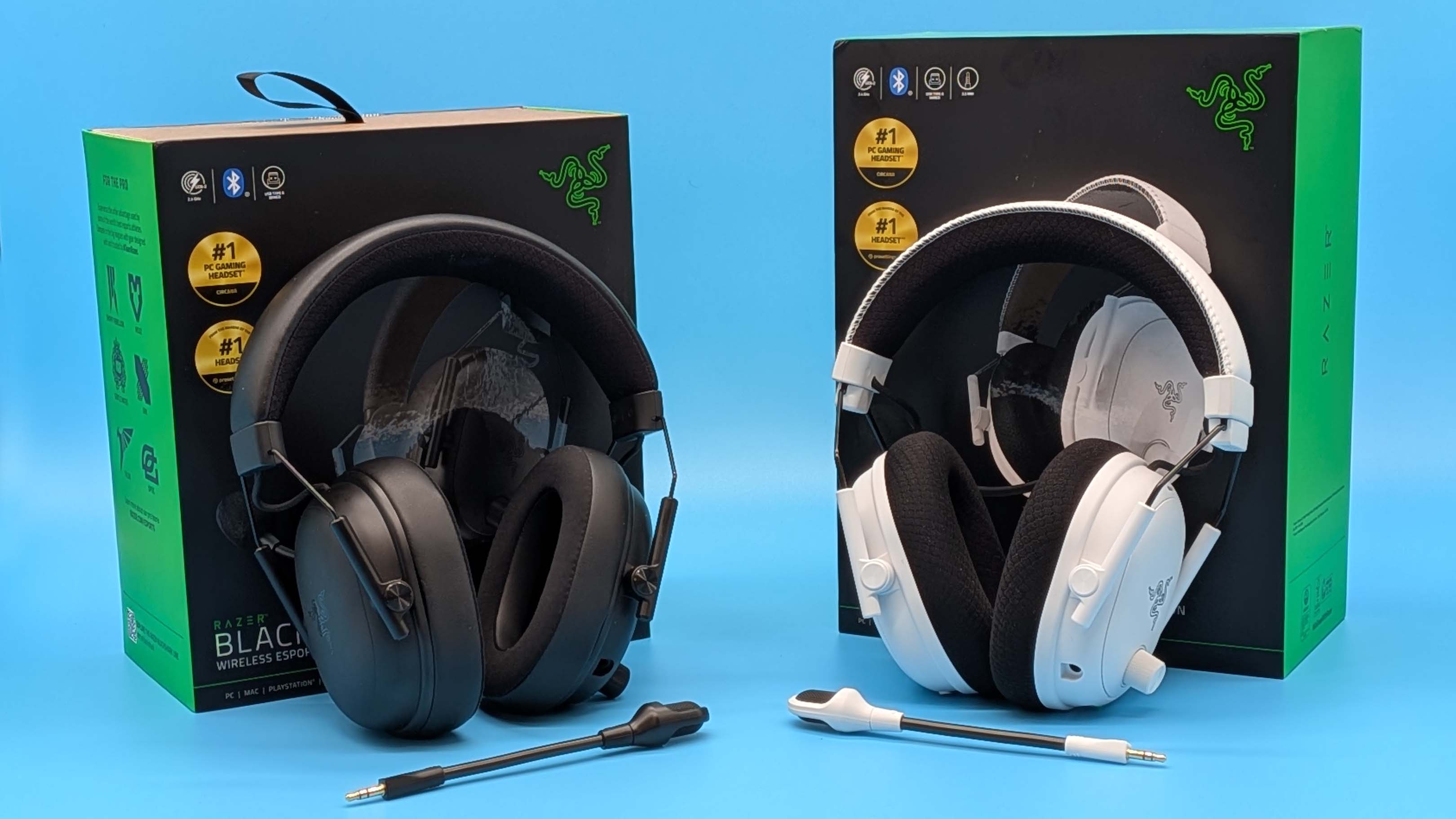
BlackShark V3 in black and BlackShark V3 Pro in white

BlackShark V3 in black and BlackShark V3 Pro in white


If you use the super-fancy ultra-low latency toggle you're going to start eating through your battery
Both sets also have the same 70 hour battery life. That's maybe a slight disappointment given the Cloud Alpha Wireless sports that unprecedented 300 hour battery, as the needle hasn't moved on from the BlackShark V2 Pro 2023 update. There's also the fact that if you use the super-fancy ultra-low latency toggle, which drops the wireless connection speed to just 10 ms, you're going to start eating through your battery even quicker than that.
Razer engineers have said you're looking at around 30 hours with that enabled alongside ANC and with the headset at 50% volume. And apparently the ANC itself has a "negligible" impact on the battery, which means the non-Pro BlackShark V3 will have the same battery life.
✅ You really value active noise cancelling: I'm not 100% sold on the effectiveness of the V3 Pro's ANC, but it does quieten things down if you need that extra layer of solitude.
❌ You don't need that ANC: The lighter non-Pro set will give you a fantastic, ultra-low latency wireless headset experience for $100 less, and with essentially the same great audio.
It's worth noting on both headsets ultra-low latency is toggled on by default, so you'll have to turn it off to get that battery life up. Razer's HyperSpeed wireless dongle will still get you around a 25 ms connection speed anyways, so unless you're super-sensitive to it I doubt you'll feel the change.
Essentially, these are the things which will have me steering gamers away from the Pro version of the new BlackShark headset. I don't particularly rate the ANC; that feature and presumably the bio-cellulose diaphragm (and maybe the bigger magnet) in the drivers add a ton of cost and weight to the set, and that's why I would honestly suggest saving your cash and heading for the non-Pro set instead.
It still sounds great, has the option for speed should you want to prioritise that over battery life, and is lighter on the head. That makes it a decent update over the current BlackShark V2 Pro for around the same price, and also makes the extra $100 for the V3 Pro a real tough ask when Razer has such extreme competition for it within its own stable, and when the stunning Audeze Maxwell set is just $50 more at most.
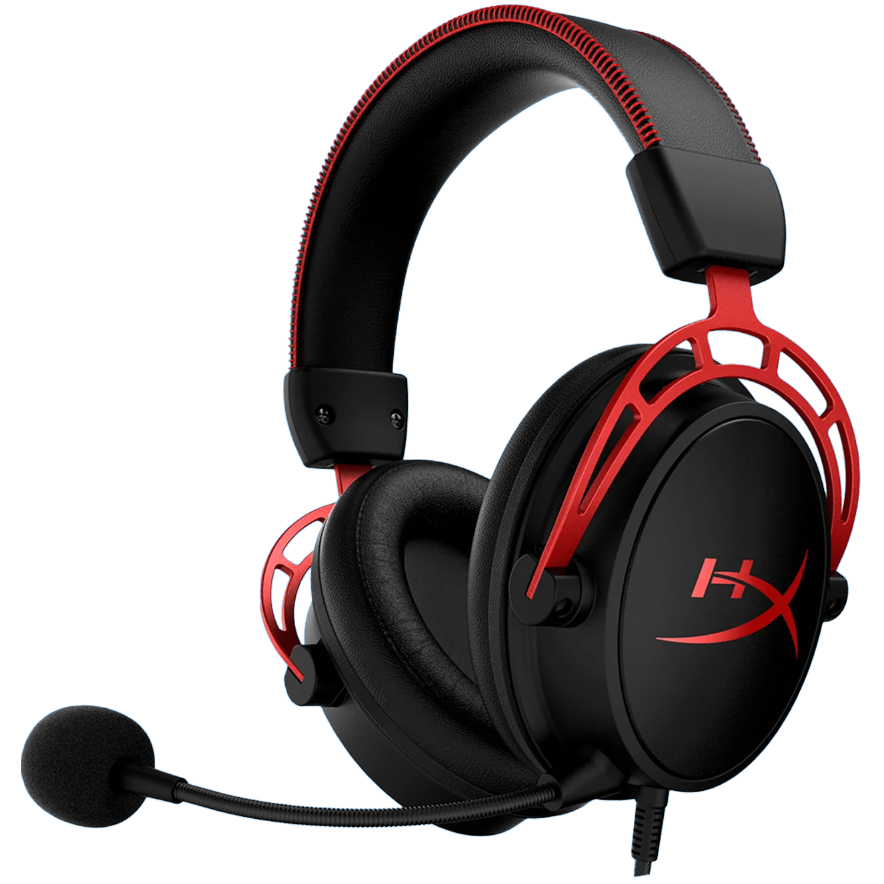
1. Best overall:
HyperX Cloud Alpha
2. Best budget:
Corsair HS55 Stereo
3. Best wireless:
HyperX Cloud Alpha Wireless
4. Best mid-range wireless:
Turtle Beach Stealth 600 Gen 3
5. Best audiophile:
Beyerdynamic MMX 330 Pro
6. Best wireless audiophile:
Audeze Maxwell
7. Best for streaming:
Audio-Technica ATH-M50xSTS StreamSet
8. Best noise-cancelling:
AceZone A-Spire
9. Best earbuds:
Steelseries Arctis GameBuds
The BlackShark V3 Pro is a great-sounding gaming headset, it's just the headline feature—its ANC—doesn't sing for me and that makes the price premium over the excellent non-Pro BlackShark V3 unpalatable.

Dave has been gaming since the days of Zaxxon and Lady Bug on the Colecovision, and code books for the Commodore Vic 20 (Death Race 2000!). He built his first gaming PC at the tender age of 16, and finally finished bug-fixing the Cyrix-based system around a year later. When he dropped it out of the window. He first started writing for Official PlayStation Magazine and Xbox World many decades ago, then moved onto PC Format full-time, then PC Gamer, TechRadar, and T3 among others. Now he's back, writing about the nightmarish graphics card market, CPUs with more cores than sense, gaming laptops hotter than the sun, and SSDs more capacious than a Cybertruck.
You must confirm your public display name before commenting
Please logout and then login again, you will then be prompted to enter your display name.
